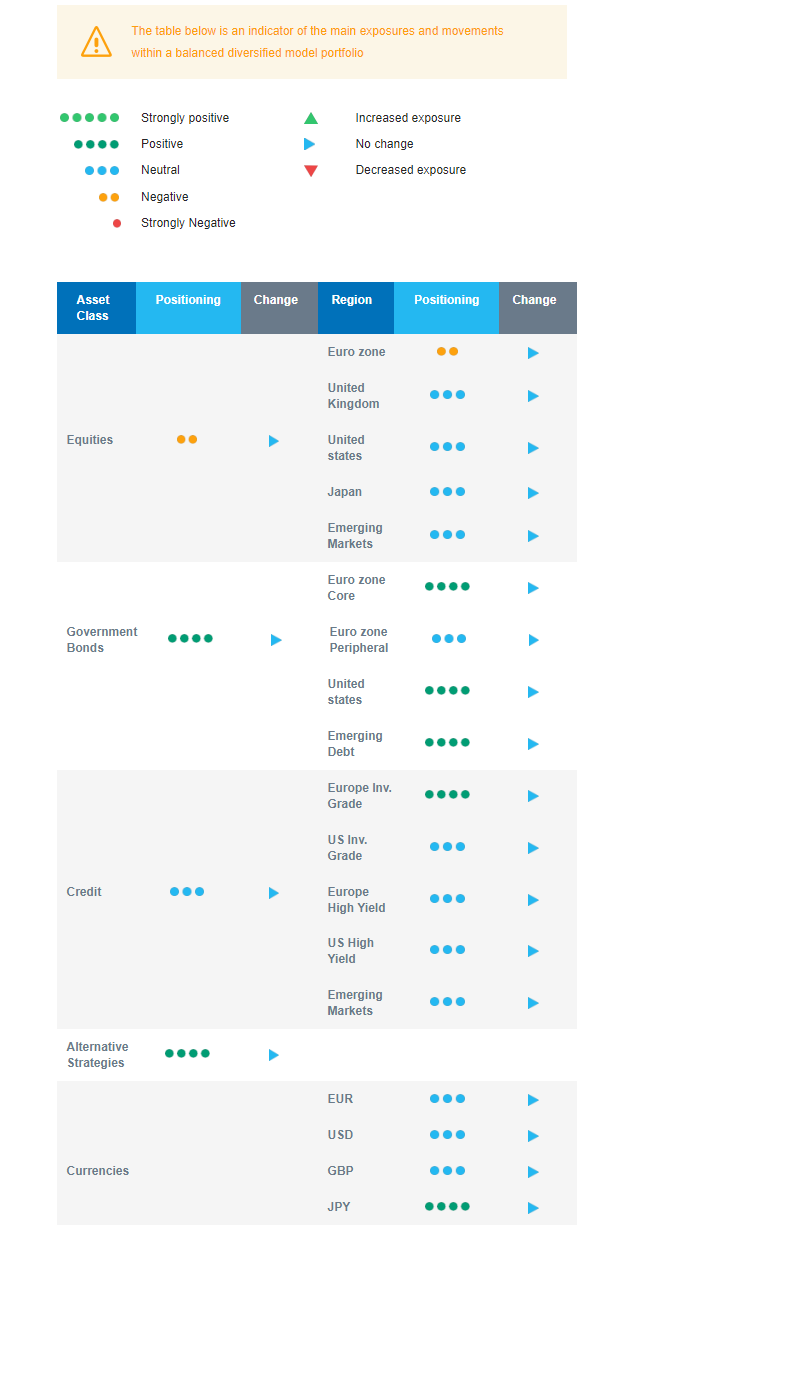Last week in a nutshell
- Inflation readings in the euro zone and abroad have come in clearly on the low side last week, pushing bond yields further down.
- Cooling inflation brings the 2% inflation target of major central banks back into focus for 2024 while though Fed Chair Jerome Powell and ECB President Christine Lagarde confirmed their wait-and-see stance.
- China’s Composite PMI edged down to 50.4 from 50.7 in the prior month, the lowest print in a year as factory activity shrank again while the service sector grew the least in 11 months.
- The US economy expanded an annualised 5.2% in Q3 2023, even higher than the 4.9% level in the preliminary estimate.
- Oil prices fell, as the market remained unconvinced that the latest round of production cuts by the OPEC+ coalition will be able to lift prices out of their recent slump.
What’s next?
- The US job report will be in the spotlight. The US labour market is gradually cooling as the unemployment rate is creeping up.
- The euro zone will release estimates of its GDP growth rate and employment change as well as the final PPI figures.
- Preliminary data on the US Household Sentiment will be published. The holiday season is already off to a good start with a successful Black Friday.
- Fears that Venezuela President Maduro could escalate this weekend’s upcoming referendum on Guyana into an actual invasion have risen in past days but it remains unlikely that Chavismo will be willing to risk a war.
Investment convictions
Core scenario
- The desynchronisation growth continues. The US economy is growing on a softening trend as well as inflation, backing the last Federal Reserve bank’s decision to pause monetary tightening and keep interest rate high for long.
- Europe remains in the worst fundamental situation, with economic and inflation data coming in below expectations (negative surprises). This does, however, take some of the pressure off the ECB, which should regain its easing capacity more quickly than expected in 2024 if necessary.
- In China, economic activity and the evolution of prices have shown some timid signs of stabilisation while the housing sector remains a drag.
- The perception of a softer bias from developed countries’ central banks has led to a significant downward repricing in bond yields. Meanwhile, China’s likelihood to export deflation to the world is fading only slowly.
- The decline in real rates has been a tailwind for equity valuations since the November FOMC.
Risks
- Risks to the outlook for global growth remain tilted to the downside as geopolitical developments unfold.
- The steepest monetary tightening of the past four decades has led to significant tightening in financial conditions. Financial stability risks could return.
- US inflation needs a credible Federal Reserve as inflation breakeven anticipations have not decreased yet while the European Central Bank must be mindful of the peripheral countries.
- Oil price, US yields and USD are the key variables to watch – a lot of pressure has been lifted in recent weeks.
Cross asset strategy
- Our asset allocation shows a relative preference for bonds over equities as the equity risk premium is currently insufficient to encourage investors to reweight the asset class.
- We have the following investment convictions:
- We are overall slightly underweight equities.
- In terms of regional allocation, we are underweight euro zone equities, as the likelihood of a contraction in activity has increased.
- We are neutral US, Japan and Emerging markets.
- We keep a preference for late-cycle sectors. Given our expected gradual decline in bond yields and proven earnings resilience, we have become more constructive on the US Technology sector.
- In the fixed income allocation:
- We focus on high-quality credit as sources of carry.
- We also buy core European and American government bonds with the objective to benefit from the rise in interest rates and bond yields in a context of slowing economic activity and cooling inflation.
- We remain exposed to emerging countries’ debt to benefit from the attractive carry.
- We hold a long position in the Japanese Yen and have exposure to some commodities, including gold, as both are good hedges in a risk-off environment.
- We expect Alternative investments to perform well as they present some decorrelation from traditional assets.
Our Positioning
With equities being relatively less attractive, we maintain a slight underweight positioning on equities and a long bond duration. Regionally, we are underweight euro zone and neutral on Japan, Emerging markets, and US equities. In the fixed income bucket, our focus is on credit that brings carry, i.e., investment grade and emerging debt. In terms of sectors, given our expected gradual decline in bond yields and proven earnings resilience, we are constructive on the US Technology sector. Beyond this, we stick to our preference for Health Care and take into account that central banks are at the end of their hiking cycle.

